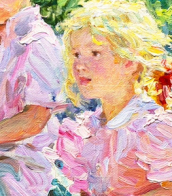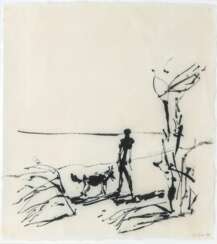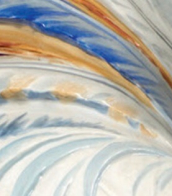riga&
.jpg)
Jacint Rigau-Ros i Serra, known in French as Hyacinthe Rigaud, was a Catalan-French baroque painter most famous for his portraits of Louis XIV and other members of the French nobility.

.jpg)
Jacint Rigau-Ros i Serra, known in French as Hyacinthe Rigaud, was a Catalan-French baroque painter most famous for his portraits of Louis XIV and other members of the French nobility.

.jpg)
Jacint Rigau-Ros i Serra, known in French as Hyacinthe Rigaud, was a Catalan-French baroque painter most famous for his portraits of Louis XIV and other members of the French nobility.

.jpg)
Jacint Rigau-Ros i Serra, known in French as Hyacinthe Rigaud, was a Catalan-French baroque painter most famous for his portraits of Louis XIV and other members of the French nobility.

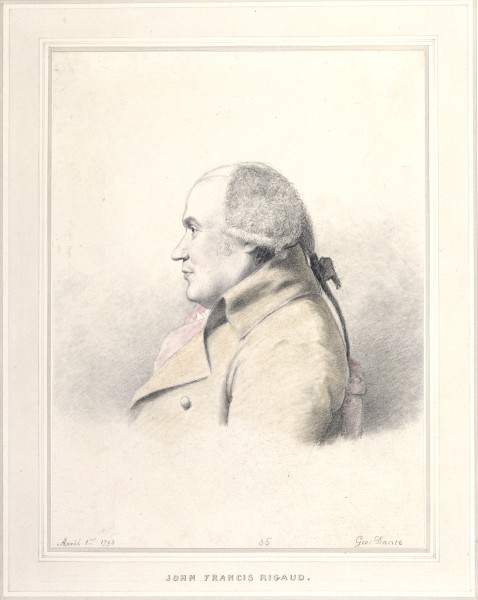
John Francis Rigaud was an English painter of French origin.
He studied painting in Italy and later became an academician at the Royal Academy of Arts in London. Rigo was a decorator and painted portraits and paintings on historical, mythological, religious themes and allegories.

.jpg)
Jacint Rigau-Ros i Serra, known in French as Hyacinthe Rigaud, was a Catalan-French baroque painter most famous for his portraits of Louis XIV and other members of the French nobility.

.jpg)
Jacint Rigau-Ros i Serra, known in French as Hyacinthe Rigaud, was a Catalan-French baroque painter most famous for his portraits of Louis XIV and other members of the French nobility.

.jpg)
Jacint Rigau-Ros i Serra, known in French as Hyacinthe Rigaud, was a Catalan-French baroque painter most famous for his portraits of Louis XIV and other members of the French nobility.


Jacques Rigaud was a French painter and printmaker of the Old Master period.
Rigaud painted many views of magnificent French royal palaces, castles, ornamental gardens and parks, animated by strolling dressed-up people. These include the palaces at Paris, Versailles, Fontainebleau, Chantilly, Marly, Saint-Cloud, Chambord, Anet, Blois, Monceau, Clagny, Saint-Germain-en-Laye, Vincennes, and Amboise. He also created series of views of Paris with sweeping panoramas that simultaneously depict the majestic Notre Dame Cathedral, working life on the banks of the Seine, horses with cargo, and wealthy gentlemen.

.jpg)
Jacint Rigau-Ros i Serra, known in French as Hyacinthe Rigaud, was a Catalan-French baroque painter most famous for his portraits of Louis XIV and other members of the French nobility.


Jacques Rigaud was a French painter and printmaker of the Old Master period.
Rigaud painted many views of magnificent French royal palaces, castles, ornamental gardens and parks, animated by strolling dressed-up people. These include the palaces at Paris, Versailles, Fontainebleau, Chantilly, Marly, Saint-Cloud, Chambord, Anet, Blois, Monceau, Clagny, Saint-Germain-en-Laye, Vincennes, and Amboise. He also created series of views of Paris with sweeping panoramas that simultaneously depict the majestic Notre Dame Cathedral, working life on the banks of the Seine, horses with cargo, and wealthy gentlemen.

.jpg)
Jacint Rigau-Ros i Serra, known in French as Hyacinthe Rigaud, was a Catalan-French baroque painter most famous for his portraits of Louis XIV and other members of the French nobility.

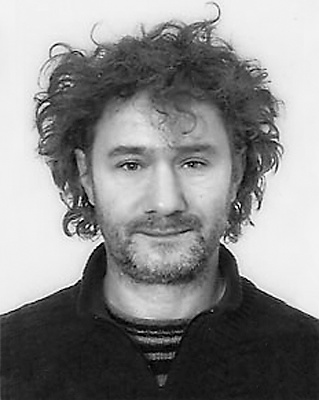
Kęstutis Grigaliūnas - Lithuanian graphic artist, art teacher. 1988-1989 created linen carvings, wood carvings, screen prints, etchings, illustrated books. Since 1990 one of the first Lithuanian graphic designers to use the color screen printing technique. Made a cut out of cardboard and plywood. It is characterized by a pronounced graphic beginning - lines, signs, ornaments, figurative and abstract motifs are used. Since 1998 creates more complex plastic graphic works and cut-outs, they feature postmodernism features, pop art, Fluxus elements, decorative, eclectic images. A playful mood, irony, and various intellectual references to the images of Lithuania and other cultures and civilizations prevail.


Kęstutis Grigaliūnas - Lithuanian graphic artist, art teacher. 1988-1989 created linen carvings, wood carvings, screen prints, etchings, illustrated books. Since 1990 one of the first Lithuanian graphic designers to use the color screen printing technique. Made a cut out of cardboard and plywood. It is characterized by a pronounced graphic beginning - lines, signs, ornaments, figurative and abstract motifs are used. Since 1998 creates more complex plastic graphic works and cut-outs, they feature postmodernism features, pop art, Fluxus elements, decorative, eclectic images. A playful mood, irony, and various intellectual references to the images of Lithuania and other cultures and civilizations prevail.
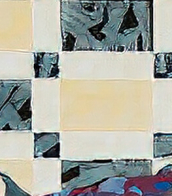

Kęstutis Grigaliūnas - Lithuanian graphic artist, art teacher. 1988-1989 created linen carvings, wood carvings, screen prints, etchings, illustrated books. Since 1990 one of the first Lithuanian graphic designers to use the color screen printing technique. Made a cut out of cardboard and plywood. It is characterized by a pronounced graphic beginning - lines, signs, ornaments, figurative and abstract motifs are used. Since 1998 creates more complex plastic graphic works and cut-outs, they feature postmodernism features, pop art, Fluxus elements, decorative, eclectic images. A playful mood, irony, and various intellectual references to the images of Lithuania and other cultures and civilizations prevail.
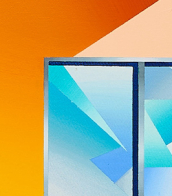

Kęstutis Grigaliūnas - Lithuanian graphic artist, art teacher. 1988-1989 created linen carvings, wood carvings, screen prints, etchings, illustrated books. Since 1990 one of the first Lithuanian graphic designers to use the color screen printing technique. Made a cut out of cardboard and plywood. It is characterized by a pronounced graphic beginning - lines, signs, ornaments, figurative and abstract motifs are used. Since 1998 creates more complex plastic graphic works and cut-outs, they feature postmodernism features, pop art, Fluxus elements, decorative, eclectic images. A playful mood, irony, and various intellectual references to the images of Lithuania and other cultures and civilizations prevail.


Kęstutis Grigaliūnas - Lithuanian graphic artist, art teacher. 1988-1989 created linen carvings, wood carvings, screen prints, etchings, illustrated books. Since 1990 one of the first Lithuanian graphic designers to use the color screen printing technique. Made a cut out of cardboard and plywood. It is characterized by a pronounced graphic beginning - lines, signs, ornaments, figurative and abstract motifs are used. Since 1998 creates more complex plastic graphic works and cut-outs, they feature postmodernism features, pop art, Fluxus elements, decorative, eclectic images. A playful mood, irony, and various intellectual references to the images of Lithuania and other cultures and civilizations prevail.


Kęstutis Grigaliūnas - Lithuanian graphic artist, art teacher. 1988-1989 created linen carvings, wood carvings, screen prints, etchings, illustrated books. Since 1990 one of the first Lithuanian graphic designers to use the color screen printing technique. Made a cut out of cardboard and plywood. It is characterized by a pronounced graphic beginning - lines, signs, ornaments, figurative and abstract motifs are used. Since 1998 creates more complex plastic graphic works and cut-outs, they feature postmodernism features, pop art, Fluxus elements, decorative, eclectic images. A playful mood, irony, and various intellectual references to the images of Lithuania and other cultures and civilizations prevail.


André Krigar is a German artist. He studied painting at the Berlin College of Art. Since 1992 he has joined the Nordic Realists.
André Krigar follows an expressive style, using oil on linen. His recurring themes are wide and expansive landscapes, as well as the hustle and bustle of Berlin city life, where he currently lives and works. He is a true plein air artist.


André Krigar is a German artist. He studied painting at the Berlin College of Art. Since 1992 he has joined the Nordic Realists.
André Krigar follows an expressive style, using oil on linen. His recurring themes are wide and expansive landscapes, as well as the hustle and bustle of Berlin city life, where he currently lives and works. He is a true plein air artist.


André Krigar is a German artist. He studied painting at the Berlin College of Art. Since 1992 he has joined the Nordic Realists.
André Krigar follows an expressive style, using oil on linen. His recurring themes are wide and expansive landscapes, as well as the hustle and bustle of Berlin city life, where he currently lives and works. He is a true plein air artist.


André Krigar is a German artist. He studied painting at the Berlin College of Art. Since 1992 he has joined the Nordic Realists.
André Krigar follows an expressive style, using oil on linen. His recurring themes are wide and expansive landscapes, as well as the hustle and bustle of Berlin city life, where he currently lives and works. He is a true plein air artist.
